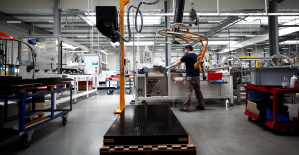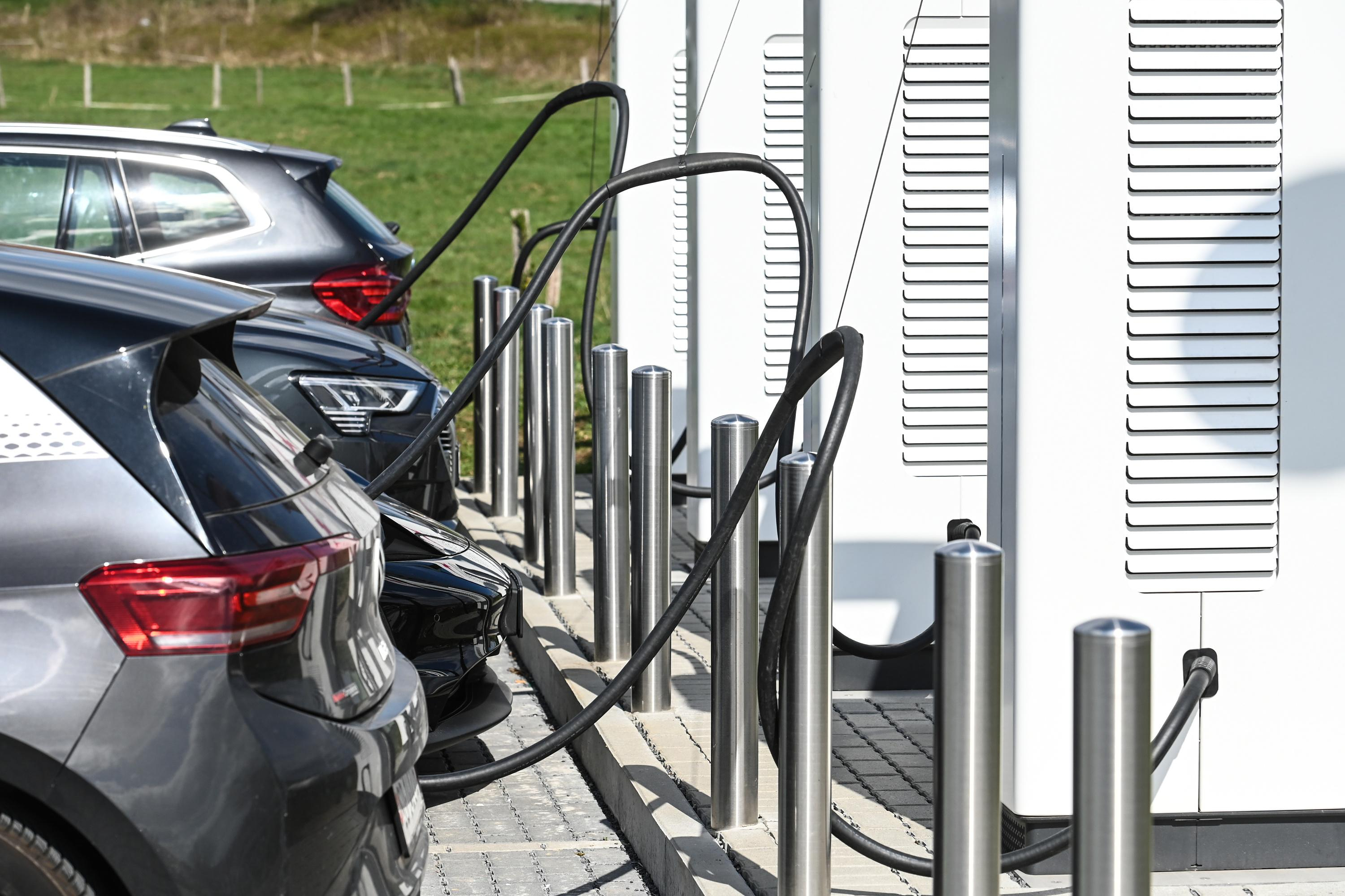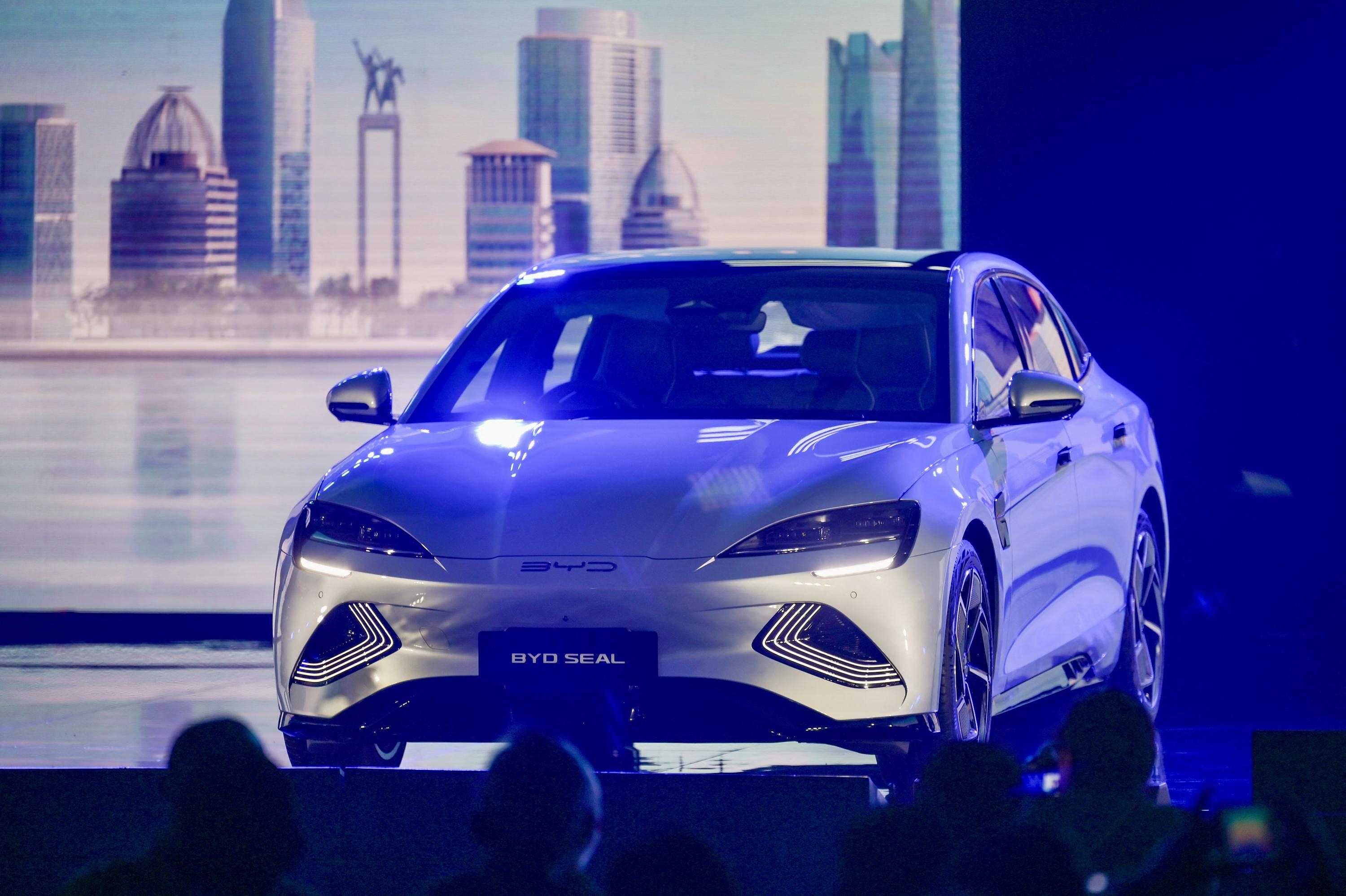Pineapple fibers for the seats, kapok nuts in the fabric and floor mats with old fishing nets: car manufacturers are constantly coming up with new ideas to make car production more sustainable not only from an economic point of view, but also from an environmental point of view.
But with the ecological awareness that the automotive industry has also discovered for itself, things are not always getting easier. Not only is it a challenge to maintain the usual quality standards with, for example, recycled materials - which makes production more complex. Obtaining the new eco-fabrics is also complex.
Example fishing nets. Before they are processed into floor mats in the car, they go through a long process. Derk Remmers, professional diver, volunteers with like-minded people several times a year for the non-profit organization Ghost Diving in search of ghost nets – fishing nets that have been lost, are floating around and got tangled up somewhere. “I want to actively do something about marine pollution. I also like the approach to further processing.”
According to Healthy Seas, another nonprofit that works to clean up the ocean, an estimated 640,000 tons of fishing nets end up in the ocean every year, where they can pose a deadly threat to wildlife.
"Of course, the old nets only make up a small part, but every fish saved counts, which justifies the high effort," says Healthy Seas project manager Christina Wiegers.
After the dives, the nets are cleaned, dried and finally shredded on land. The granules then go to Aquafil, a company that specializes in the processing of so-called recyclates.
The raw materials include nets as well as carpet remnants or offcuts from the fashion industry. At the end of the production chain, the new, regenerated nylon Econyl is created, which is sent to suppliers on large rolls - and later processed into floor mats for the Hyundai Ioniq 5 and cars from other brands.
The CO₂ emissions at Aquafil are around 80 percent lower than with conventional petroleum-based nylon production. Car manufacturers and their suppliers are happy to accept the special nylon yarn.
Roberto Rossetti, responsible at BMW for the CO₂ calculation and secondary raw material quota, among other things, sees several advantages of sustainable materials and recyclates in vehicle construction. In addition to CO₂ savings, these included strength, weight reduction and sustainability.
"In order to use as high a proportion of secondary materials as possible, it is important to integrate them early in the development of the vehicle," says Rossetti.
BMW currently uses around 30 percent recycled materials per vehicle, the target is 50 percent. BMW wants to further reduce the CO₂ footprint of its vehicles with secondary materials – by 75 to over 80 percent for aluminum, by 50 to 80 percent for steel and by 50 to 80 percent for thermoplastics.
Thermoplastic made from 100 percent recycled material is already being used where the customer cannot see it, such as in the substructure of door panels or cable ducts. With the i3, BMW integrated flax fibers for the door panels and parts of the center console from 2013 onwards. The new BMW iX contains wood and natural wool fibers certified according to the FSC environmental standard.
To treat the leather, the Munich-based car manufacturer uses an extract from olive tree leaves that are obtained during the annual pruning. As with Hyundai, plastic yarns made from recycled fishing nets are used for the floor covering and floor mats.
With partners such as BASF or Interzero, BMW is researching and developing new recycling options, but also new materials - for example pyrolysis oil from organic substances as the basis for new plastic products. The material Deserttex is based on cactus fibers and polyurethane plastic and could serve as a leather substitute in the future.
“Natural materials are interesting because they absorb CO₂ and emit oxygen during the growth phase. Renewable raw materials can also reduce the weight by 30 percent compared to conventional materials," says BMW man Rossetti.
In addition to steel with lower CO₂ emissions, new materials are also used at Volkswagen, including flax, hemp, kenaf, cellulose, cotton and wood. With ID.Buzz and ID.Buzz Cargo, polyurethane recyclates are used instead of leather. For the seat surfaces and door panels, VW uses a mix of recycled PET bottles and shredded T-shirts. Mazda, meanwhile, uses cork in the interior of the MX-30.
At the IAA in Munich last year, the supplier Faurecia presented a cockpit made of hemp fibres, a special bio-fibre composite material and fossil-free steel, the production of which no longer generates any CO₂ emissions. At the same show, BMW presented a study that the manufacturer claims is 100 percent recyclable.
Mercedes wants to increase the proportion of recyclates in its vehicles to an average of 40 percent within the next ten years. The EQS and EQE already use cable ducts made from recycled household waste.
In the interior, Mercedes offers, among other things, upholstery fabrics made from recycled PET bottles. Like Hyundai, BMW and VW, carpets are made from recyclable materials such as old carpets and fishing nets. For the leather alternative of the Vision EQXX study, Mercedes used powdered cactus fiber and mushroom mycelium, the underground root-like structure of mushrooms.
Markus Schäfer, Member of the Board of Management for Development and Purchasing at Mercedes-Benz, emphasizes the challenge posed by the new eco-processes. "The vehicle interior is an important part of the brand experience." Among other things, the materials have to withstand temperature differences of around 100 degrees without becoming unstable, emitting odors or discolouring.
Depending on the component, however, recycling is complex and expensive, and the secondary materials are not always available. Another problem: Not all materials that are sustainable are perceived as beautiful by the occupants.
All components must meet the same high standards of quality, safety and reliability, regardless of whether they come from a primary or secondary source. "Appearance, feel and look must always be right," agrees Roberto Rossetti from BMW. Only then would they be accepted by customers.
In the long term, the path to sustainability is mainly via the circular economy, in which waste is reduced and recycling is a priority. The less mixed material there is in the vehicle, the easier it is to reuse materials several times. From VW's point of view, the most sustainable way to produce an automobile.
"Everything on shares" is the daily stock exchange shot from the WELT business editorial team. Every morning from 7 a.m. with the financial journalists from WELT. For stock market experts and beginners. Subscribe to the podcast on Spotify, Apple Podcast, Amazon Music and Deezer. Or directly via RSS feed.

 Germany: the trial of an AfD leader, accused of chanting a Nazi slogan, resumes this Tuesday
Germany: the trial of an AfD leader, accused of chanting a Nazi slogan, resumes this Tuesday New York: at Columbia University, the anti-Semitic drift of pro-Palestinian demonstrations
New York: at Columbia University, the anti-Semitic drift of pro-Palestinian demonstrations What is Akila, the mission in which the Charles de Gaulle is participating under NATO command?
What is Akila, the mission in which the Charles de Gaulle is participating under NATO command? Lawyer, banker, teacher: who are the 12 members of the jury in Donald Trump's trial?
Lawyer, banker, teacher: who are the 12 members of the jury in Donald Trump's trial? What High Blood Pressure Does to Your Body (And Why It Should Be Treated)
What High Blood Pressure Does to Your Body (And Why It Should Be Treated) Vaccination in France has progressed in 2023, rejoices Public Health France
Vaccination in France has progressed in 2023, rejoices Public Health France Food additives suspected of promoting cardiovascular diseases
Food additives suspected of promoting cardiovascular diseases “Even morphine doesn’t work”: Léane, 17, victim of the adverse effects of an antibiotic
“Even morphine doesn’t work”: Léane, 17, victim of the adverse effects of an antibiotic Orthodox bishop stabbed in Sydney: Elon Musk opposes Australian injunction to remove videos on X
Orthodox bishop stabbed in Sydney: Elon Musk opposes Australian injunction to remove videos on X One in three facial sunscreens does not protect enough, warns L'Ufc-Que Choisir
One in three facial sunscreens does not protect enough, warns L'Ufc-Que Choisir What will become of the 81 employees of Systovi, a French manufacturer of solar panels victim of “Chinese dumping”?
What will become of the 81 employees of Systovi, a French manufacturer of solar panels victim of “Chinese dumping”? “I could lose up to 5,000 euros per month”: influencers are alarmed by a possible ban on TikTok in the United States
“I could lose up to 5,000 euros per month”: influencers are alarmed by a possible ban on TikTok in the United States Dance, Audrey Hepburn’s secret dream
Dance, Audrey Hepburn’s secret dream The series adaptation of One Hundred Years of Solitude promises to be faithful to the novel by Gabriel Garcia Marquez
The series adaptation of One Hundred Years of Solitude promises to be faithful to the novel by Gabriel Garcia Marquez Racism in France: comedian Ahmed Sylla apologizes for “having minimized this problem”
Racism in France: comedian Ahmed Sylla apologizes for “having minimized this problem” Mohammad Rasoulof and Michel Hazanavicius in competition at the Cannes Film Festival
Mohammad Rasoulof and Michel Hazanavicius in competition at the Cannes Film Festival Skoda Kodiaq 2024: a 'beast' plug-in hybrid SUV
Skoda Kodiaq 2024: a 'beast' plug-in hybrid SUV Tesla launches a new Model Y with 600 km of autonomy at a "more accessible price"
Tesla launches a new Model Y with 600 km of autonomy at a "more accessible price" The 10 best-selling cars in March 2024 in Spain: sales fall due to Easter
The 10 best-selling cars in March 2024 in Spain: sales fall due to Easter A private jet company buys more than 100 flying cars
A private jet company buys more than 100 flying cars This is how housing prices have changed in Spain in the last decade
This is how housing prices have changed in Spain in the last decade The home mortgage firm drops 10% in January and interest soars to 3.46%
The home mortgage firm drops 10% in January and interest soars to 3.46% The jewel of the Rocío de Nagüeles urbanization: a dream villa in Marbella
The jewel of the Rocío de Nagüeles urbanization: a dream villa in Marbella Rental prices grow by 7.3% in February: where does it go up and where does it go down?
Rental prices grow by 7.3% in February: where does it go up and where does it go down? Europeans: “All those who claim that we don’t need Europe are liars”, criticizes Bayrou
Europeans: “All those who claim that we don’t need Europe are liars”, criticizes Bayrou With the promise of a “real burst of authority”, Gabriel Attal provokes the ire of the opposition
With the promise of a “real burst of authority”, Gabriel Attal provokes the ire of the opposition Europeans: the schedule of debates to follow between now and June 9
Europeans: the schedule of debates to follow between now and June 9 Europeans: “In France, there is a left and there is a right,” assures Bellamy
Europeans: “In France, there is a left and there is a right,” assures Bellamy These French cities that will boycott the World Cup in Qatar
These French cities that will boycott the World Cup in Qatar Serie A: Bologna surprises AS Rome in the race for the C1
Serie A: Bologna surprises AS Rome in the race for the C1 Serie A: Marcus Thuram king of Italy, end of the debate for the position of number 9 with the Blues?
Serie A: Marcus Thuram king of Italy, end of the debate for the position of number 9 with the Blues? Milan AC-Inter Milan: Thuram and Pavard impeccable, Hernandez helpless… The tops and flops of the derby
Milan AC-Inter Milan: Thuram and Pavard impeccable, Hernandez helpless… The tops and flops of the derby Ligue 2: Auxerre leader, Bordeaux in crisis, play-offs... 5 questions about an exciting end of the season
Ligue 2: Auxerre leader, Bordeaux in crisis, play-offs... 5 questions about an exciting end of the season


















